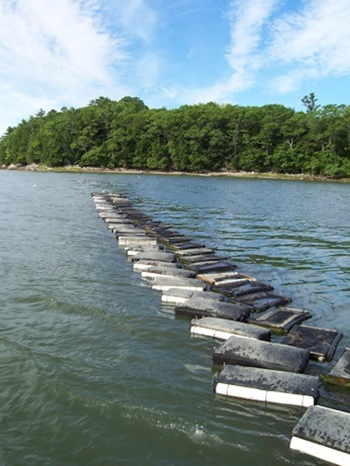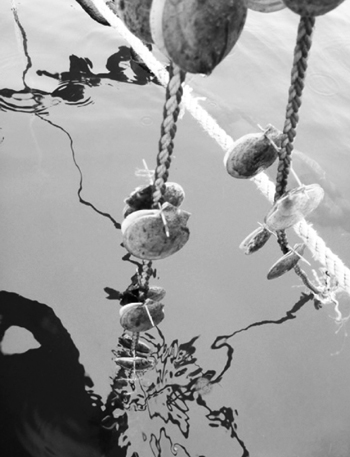New Aquaculture Activities

Oyster rearing flats with protective wire mesh covers.
Various innovators presented their latest activities during Jan. 17’s Maine Aquaculture Research, Development and Education Summit.
• American Unagi has been growing baby eels, called elvers, to harvest size in Maine for the last five years, expanding every year at its incubator space, said founder Sara Rademaker. This year, it expects to start construction on a production facility in Waldoboro. Maine has one of the only elver fisheries in the U.S. Almost all elvers are currently shipped overseas, primarily to China, for grow-out. American Unagi aims to connect the valuable Maine fishery for baby eels to year-round eel production and jobs.
• Ocean’s Balance makes seaweed products for human consumption. The seaweed farm sector is seeing some pushback from traditional fisheries and from riparian landowners, said the company’s founder, Tollef Olson. Key to moving the sector forward is public education, he said. The sector has great potential as a second income stream for traditional fishermen, he added. The evolution of new equipment could help mitigate concerns by other water users. For example, new portable seaweed systems can be installed in the water in the fall and removed in the spring so they won’t be in the way of recreational boaters or lobster fishermen. “These are the types of things we need to continue to do to move forward,” Olson said. Also needed, he added, is diversification of crops and potential product lines.
• Cooke Aquaculture is in the early stages of regional investment of $500 million to create new Atlantic salmon farms and post-smolt facilities, and expand feed production, said the company’s research and development chief, Andrew Swanson.

Japanese scallop on rope technique. Dana photo.
• Kingfish Zeeland is a Dutch company seeking permits to establish a land-based land-based recirculation aquaculture system for yellowtail kingfish in Jonesport. The company was established in The Netherlands in 2015 and currently grows 600 metric tons of yellowtail kingfish annually. It’s undergoing expansion of hatchery and growout facilities there, to reach 1,000 metric tons, said Megan Sorby, operations manager for Kingfish Maine. “We would like to come to Maine to do the same thing,” she said. The company has selected a site in Jonesport, is in the permitting and design stage, and hopes to fire up hatchery operations this year at UMaine’s Center for Cooperative Aquaculture Research in Franklin.
• In 2018, Maine’s oyster industry grew 12 million Eastern oysters, valued at $8 million, said Maine Sea Grant’s Dana Morse. The Damariscotta River has been Maine’s central oyster production region. But diversification in locations and production methods is in the works. There are roughly 100 distinct oyster farming operation in Maine today. Per-piece value has risen from 44 cents in 2005 to just under 68 cents in 2018. “The market has been relatively strong,” he said. A small number of lease application have come under opposition, he noted. The sector’s strengths include the Maine brand, inherent quality of the product, and the ecosystem services provided by oyster culture, he said. Challenges include workforce shortages, the need for more marketing, and climate change and warming waters.
• Micmac Farms in Caribou is using a land-based recirculation aquaculture system to grown Maine brook trout, said Jacob Pelkey, the operation’s marketing manager. The facility is at the Aroostook Band of Micmac’s farm, which boasts other assets such as berries and orchards, and annually cultivates four acres for planting fresh produce like tomatoes, peppers, and beans. Fish from the indoor 34,000-gallon aquaculture facility have been well received throughout New England, he said. The facility has a 12,000-pound capacity that sold out this season. “That’s a testament that the fish is being well received,” he said.
• Sea scallops present an exciting opportunity for Maine, said Hugh Cowperthwaite of Coastal Enterprises Inc. “In the last four to five years, we’ve been some real development in this opportunity,” he said. The sector has benefited from technology transfers from Japan, he noted. The highly specialized gear imported from Japan includes two scallop-grading machines, two scallop drilling machines, and two scallop washers.
